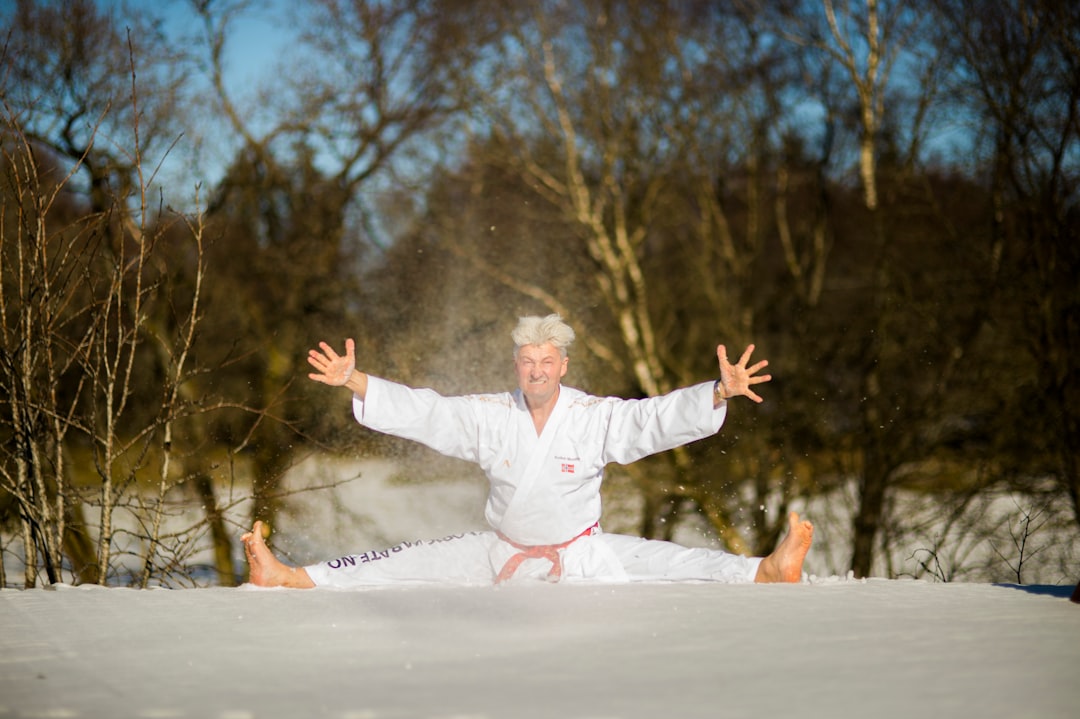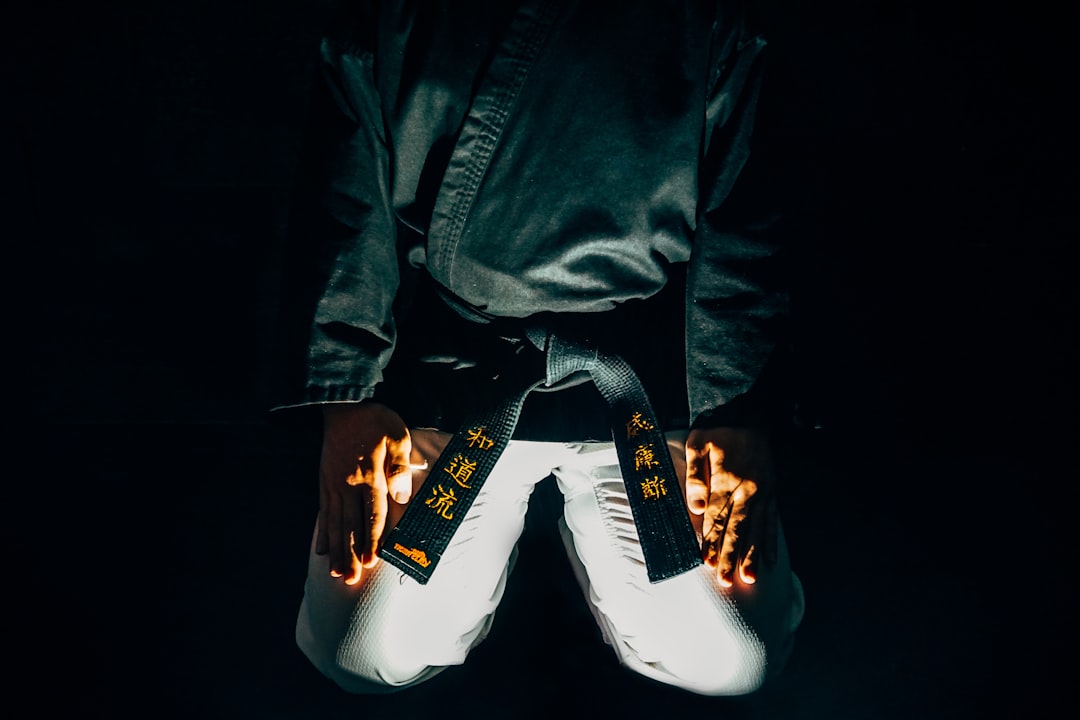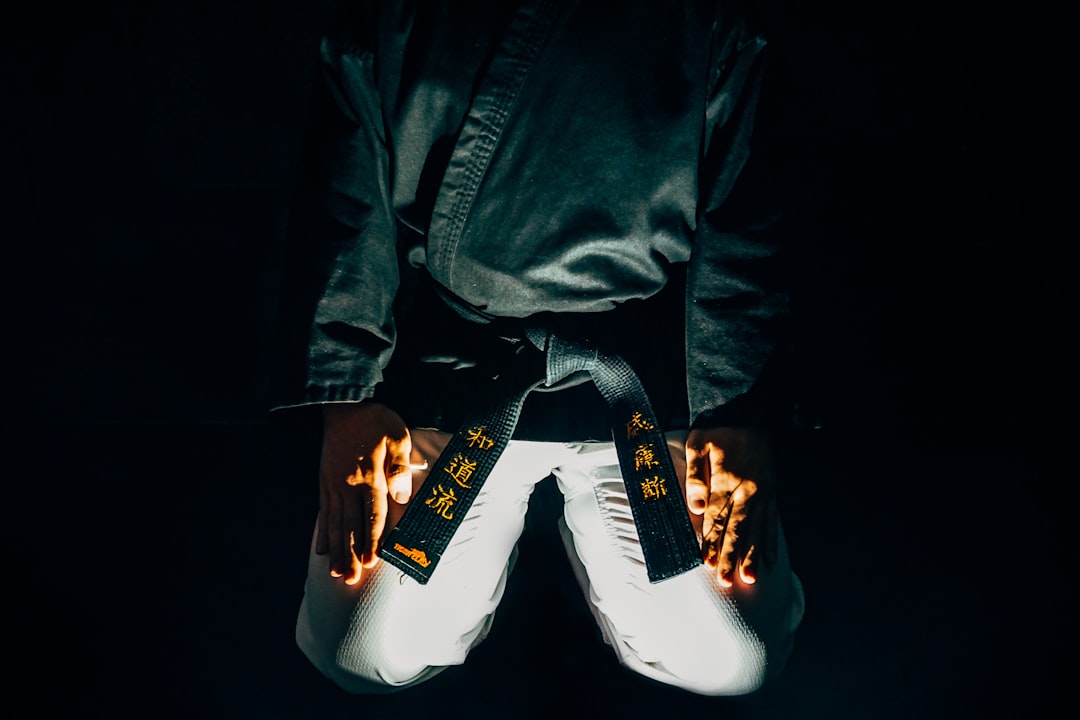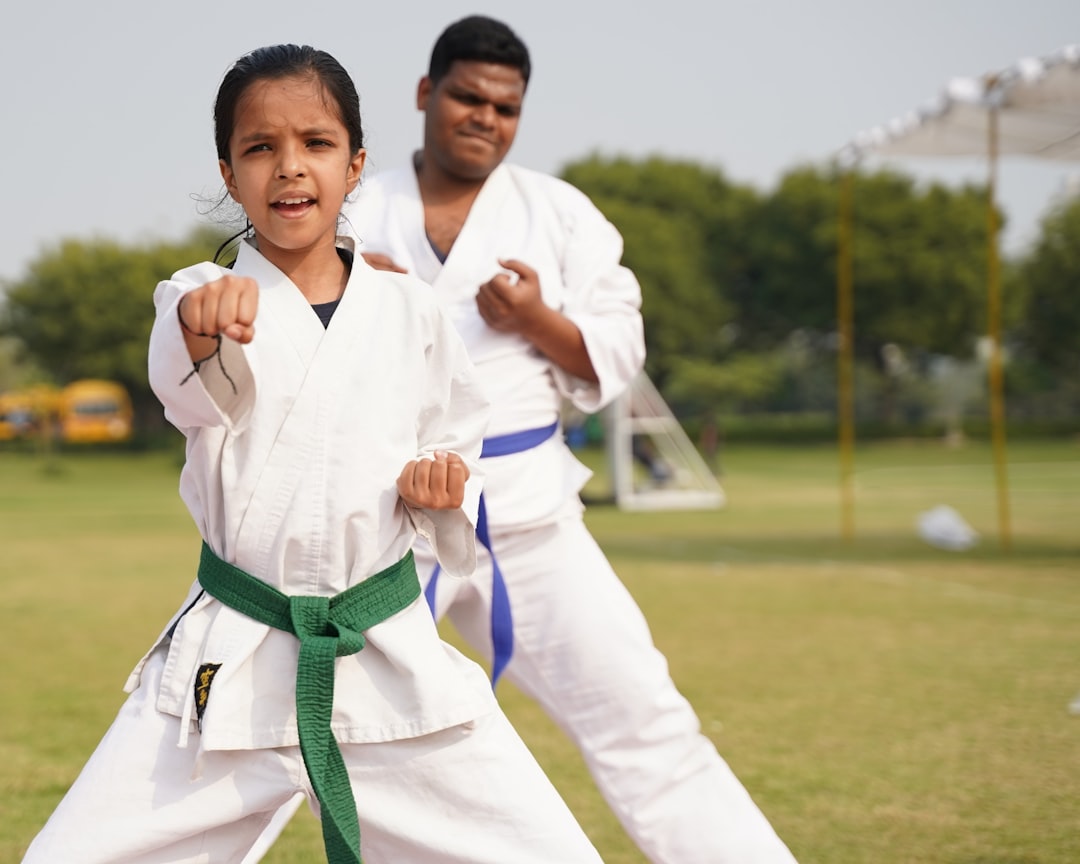The section discusses the essential role of proper equipment for effective karate practice and competition. A traditional karate suit, or gi, is both a symbol of respect and a practical choice for its durability and comfort. It should be made from heavy cotton or hemp for optimal flexibility and resilience to endure the rigors of karate training. For beginners, wearing the standard karate attire signifies their commitment to the art. Protective gear is also non-negotiable, especially during sparring, with essential items including shin, forearm, groin, and chest pads to prevent injuries. Mouthguards are equally important for protecting teeth and jaws. All protective equipment must fit well and offer sufficient protection, and regular maintenance ensures safety and a rewarding karate experience. Additionally, advanced training tools like Makiwara boards or Kizami-wara help hone striking techniques and punching power, while focus mitts are crucial for practicing evasion, timing, and accuracy in a controlled setting, improving reaction times and refining overall skill. These additional training elements are vital for anyone looking to master karate.
Karate practitioners embark on a journey that requires more than mere physical conditioning; it demands the right equipment to support their training and enhance their practice. This article serves as a guide to equipping yourself with the essential gear for karate, ensuring you’re fully prepared for both the mental and physical challenges ahead. We’ll explore the significance of the karate suit, known as a Gi, and its role in this traditional martial art. Additionally, we’ll delve into protective equipment necessary for safe practice, extra tools that can elevate your training, and specialized accessories that can give you an edge. Proper maintenance and care for your karate gear are also crucial for longevity and optimal performance. Whether you’re a beginner or an experienced karateka, this comprehensive guide will provide valuable tips to select the best equipment tailored to your practice.
- Essential Karate Gear: The Comprehensive Guide to Your Martial Arts Wardrobe
- The Karate Suit: Understanding Gi and Its Importance
- Protective Equipment for Safe Karate Practice
- Additional Tools for Aspiring Karateka: From Training Dummies to Focus Mitts
Essential Karate Gear: The Comprehensive Guide to Your Martial Arts Wardrobe

When stepping into the realm of karate, having the right equipment is paramount to ensure both performance and safety during practice and competition. A fundamental piece of gear for any karateka is the karate suit, also known as a gi. The traditional karate gi typically consists of a jacket, trousers, and belt, all of which are designed to facilitate movement while allowing the practitioner to be respectful to the martial art’s traditions. Is the proper karate suit essential for beginners? Absolutely, it is the standard attire that not only signifies respect but also provides durability and comfort during training. The gi should be made of a heavy cotton or hemp material, which offers both flexibility and longevity, making it suitable for the rigors of karate practice.
In addition to the gi, protective gear plays a crucial role in a karateka’s wardrobe. Protective pads are designed to safeguard sensitive areas such as the shin, forearms, groin, and chest during sparring sessions. Are protective pads mandatory for effective training? Yes, they are essential for both beginners and advanced practitioners to practice safely without the risk of injury. When selecting protective gear, it’s important to choose items that fit well and offer adequate protection. Mouthguards are also non-negotiable, as they protect the teeth and jaw from potential impacts. Ensuring that all protective equipment is well-maintained and in good condition is a responsibility every karate practitioner should uphold to maximize safety and enjoyment of the sport.
The Karate Suit: Understanding Gi and Its Importance

When engaging in karate, selecting the appropriate attire is crucial for both functionality and respect for the practice. The karate suit, commonly referred to as a Gi, is a key component of traditional karate training. Made of lightweight cotton or hemp, the Gi allows practitioners to move freely, enabling them to execute techniques with ease while providing durability for regular use. It typically consists of a jacket, trousers, and a belt, known as an Obi, which also serves as a ranking indicator. The Gi’s design facilitates a clear view of movements, making it easier for both students and instructors to observe and correct forms. Is the Gi essential for practicing karate? Absolutely, as it is not only a traditional garment but also one that provides practical benefits for the discipline. Does the type of Gi matter? Yes, as different styles of Gis may offer varying levels of flexibility, durability, and comfort, which can influence a practitioner’s performance and comfort during training sessions. When choosing a Gi, it’s important to consider factors such as weave tightness, material quality, and the fit of the garment to ensure it meets the needs of the individual and adheres to the traditions of karate.
Protective Equipment for Safe Karate Practice

When engaging in karate practice, especially when sparring or training with a partner, protective equipment is crucial to ensure safety and prevent injuries. A key piece of gear for any karate practitioner is the karate suit, also known as a gi. This traditional uniform not only facilitates proper form and movement but also provides a layer of protection against abrasions and minor scrapes that can occur during practice. Are the protective elements of a karate suit sufficient for all types of training? While the gi offers some level of protection, it is not designed to withstand heavy impact or full-force techniques. Therefore, additional protective equipment such as gloves, shin guards, and groin protectors are essential for more intensive training sessions. These items are specifically engineered to absorb impact and provide cushioning where injuries are most likely to occur. What types of protective gear should be considered beyond the karate suit? Beyond the basic gi, practitioners should consider wrist supports for preventing sprains, mouthguards to protect the teeth and gums, and protective footwear designed for martial arts to ensure ankle support and grip during practice. Ensuring that each piece of equipment is well-fitted and appropriate for the type of karate being practiced will enhance both safety and performance on the mat.
Additional Tools for Aspiring Karateka: From Training Dummies to Focus Mitts

Aspiring karateka who are serious about honing their skills will benefit from a variety of additional tools beyond the basics like a karate suit called a gi. Training dummies, also known as Makiwara boards or Kizami-wara, are instrumental for practicing strikes and developing punching power. These static targets allow practitioners to refine their technique, ensuring that each strike is precise and powerful. For instance, how does one improve their kicks and punches without a proper target? Training dummies provide the necessary resistance to help karateka perfect their form and strength.
Furthermore, focus mitts are another essential piece of equipment for sparring and drilling. These lightweight pads are worn on the hand or forearm and are used by a partner to simulate an opponent’s strikes. They enable practitioners to work on evasion techniques, timing, and accuracy while also providing a safer training environment. Do focus mitts aid in improving reaction times? Absolutely, as they force karateka to anticipate and respond to attacks with swift, precise movements. Whether it’s for solo practice or partnered drills, focus mitts are an indispensable tool for any serious practitioner looking to elevate their skill level in the art of karate.
In conclusion, embarking on a journey in karate requires careful consideration of the necessary equipment to ensure both performance and safety. A prime piece of gear is the karate suit, commonly known as a Gi, which is essential for practice and competition. Beyond the Gi, protective equipment such as hand protectors, shin guards, and mouthpieces are crucial for safeguarding against injuries. Aspiring karateka can further enhance their training with additional tools like target pads, focus mitts, and practice dummies, which provide opportunities to refine techniques and skills. With the right combination of these elements, practitioners can fully engage in the discipline of karate, fostering growth and mastery over time. Whether starting out or honing one’s abilities, the right equipment is key to a fulfilling martial arts experience.
